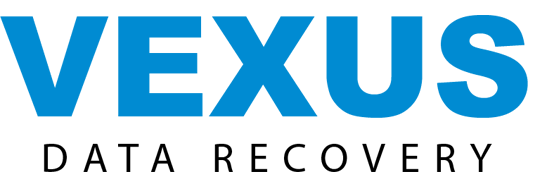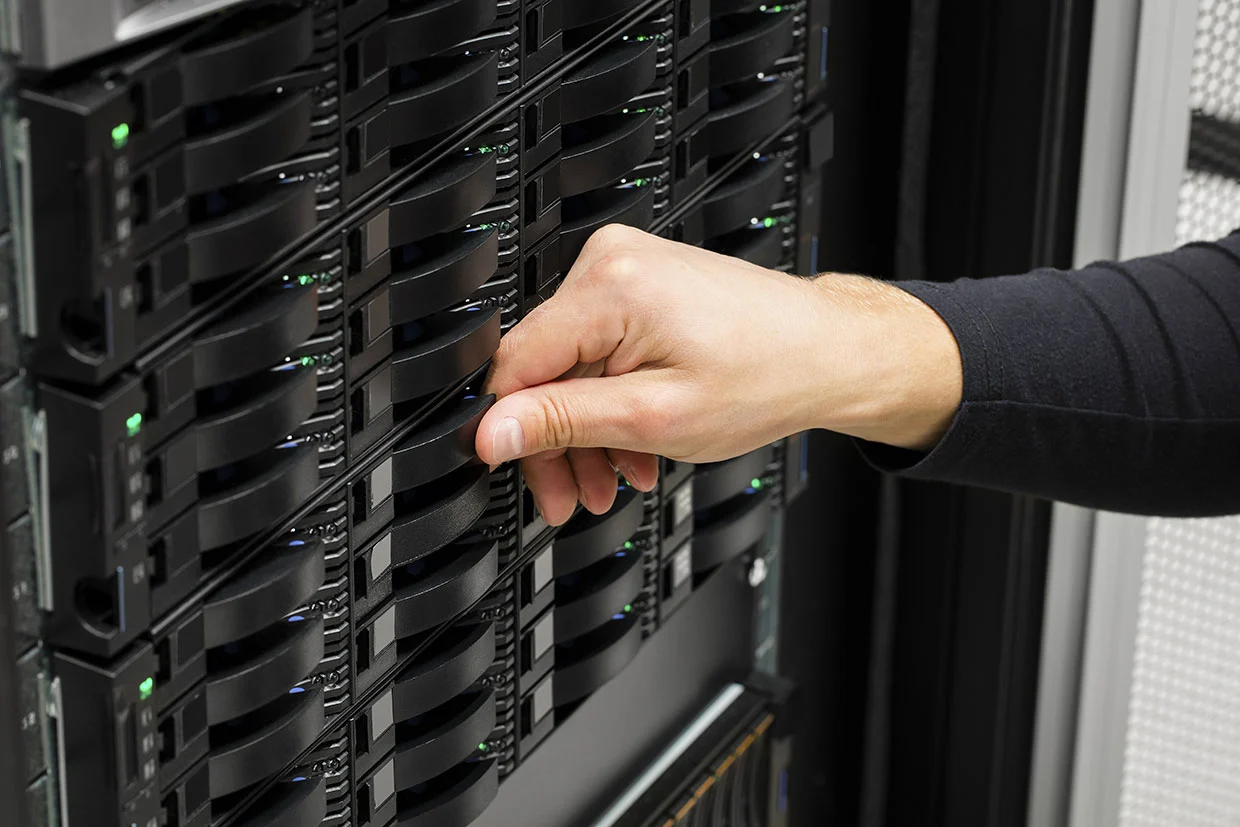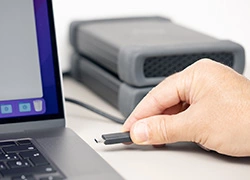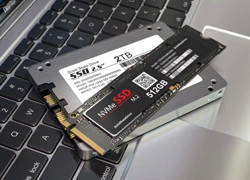In the increasingly digital business world, it is essential to ensure efficiency in data management. In this context, the use of a NAS (Network Attached Storage) stands out as a powerful solution for optimizing data storage in companies.
We'll explore how NAS has become a key part of IT infrastructure, offering a modern, flexible approach to the growing storage demands of an ever-evolving digital world.
What is a NAS?
A NAS, also known as Network Attached Storage, is a network-connected data storage solution that plays an essential role in the efficient and accessible management of information in corporate environments. Unlike traditional storage devices such as local servers, NAS is designed to provide centralized access to data, making file sharing and administration easier across an enterprise network.
This technology has revolutionized the way organizations deal with storage, offering scalability, security, and efficiency in data management, regardless of the size of the company.
NAS is composed of integrated hardware and software that provide a network-centric storage solution. Let's explore the main components and how they work:
Hardware
Processor and RAM Memory: Just like conventional computers, a NAS has one or more processors and RAM memory to perform the necessary operations. The performance of these components influences the speed of data access and transfer.
Storage Units (HDDs/SSDs): The heart of NAS lies in the storage units, which can be hard disk drives (HDDs) or solid-state drives (SSDs). These drives store data persistently and can be configured in different arrangements, such as RAID, for redundancy and performance.
Network card: One or more network cards allow the NAS to be connected to the local network, enabling remote access to data. The data transfer rate is influenced by the speed and type of connection used, such as Gigabit Ethernet or 10 Gigabit Ethernet SFP+.
Operating System (Software)
Management Interface: The NAS is accessed and configured through a management interface, usually based on a web interface. This interface allows you to configure users, shares, security, and other settings.
File System: The file system is the method by which data is organized and stored on drives. Common file systems include ext4, Btrfs, and ZFS, depending on the NAS model and brand.
Network Protocols: The NAS supports multiple network protocols to enable efficient communication with connected devices. Examples include SMB/CIFS for file sharing on Windows, NFS for Unix/Linux-based systems, FTP for file transfer, and HTTP/HTTPS for web access.
Integrated Services: Many NAS offer integrated services such as media servers, automatic backup, print servers, private cloud system and even third-party applications for specific functionalities.
General Operation
Network Connection: The NAS is connected to the local network through the existing network infrastructure, allowing devices on the network to access and share data.
Configuration and Management: Initial configuration and ongoing management of the NAS are performed through the management interface, where administrators can set user permissions, configure backups, monitor performance, and perform other administrative tasks.
Remote access: Many NAS devices support remote access, allowing users to access their data from anywhere over the internet, providing flexibility and mobility.
NAS allows centralized file access and sharing, and one of its main advantages lies in the ease of capacity expansion, enabling companies to keep up with exponential data growth without compromising performance. This scalability makes NAS a versatile option for businesses of all sizes.
By concentrating data in a single point, NAS simplifies management, reducing operational complexity. Furthermore, centralization facilitates backup and data recovery, promoting information integrity and preventing unwanted losses. This contributes to data security, a critical aspect in a corporate environment.
Performance
The speed and efficiency of file transfer are other notable benefits. With high transfer rates, NAS makes it easier to share data between team members, promoting more efficient collaboration and increasing group productivity.
There are several NAS options on the market, varying in capacity, performance, and features. Synology, QNAP, SEAGATE, WD, ASUSTOR are some manufacturers. Small companies can opt for simpler models, while large corporations may demand more robust and scalable solutions. The choice must consider the amount of data to be stored, the necessary access speed, and security requirements.
Another important aspect is data redundancy, crucial to prevent the irreparable loss of information. NAS devices support RAID configurations (Redundant Array of Independent Disks), ensuring operational continuity even in the event of a hard drive failure.
Security should also be a priority when choosing a NAS. Features such as data encryption, user authentication, and access control ensure that only authorized people have access to sensitive information.
Furthermore, the integration of the NAS with other systems is a crucial factor. The ability to support network protocols, operating systems, and enterprise applications is critical to ensuring an efficient and smooth implementation.
What if the NAS fails and data needs to be recovered?
A failure in NAS storage can cause a series of challenges in data recovery and is related to several factors. These factors can range from physical problems, such as hardware failures, to logical issues, such as configuration errors or data corruption.
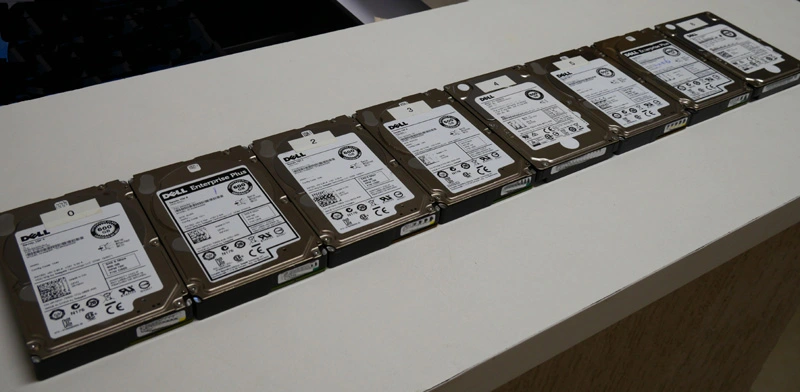
2.5" SAS disks from a NAS - Data Recovery
As far as physical problems are concerned, data recovery can become complex due to the failure of hard drives or SSDs, which requires specialized technical knowledge and appropriate tools to deal with this situation.
Furthermore, data recovery in the case of NAS failure can also be affected by logical issues. If data corruption occurs, you may need to use advanced data recovery techniques to restore file integrity.
Another factor that contributes to the complexity of data recovery is the size and complexity of the NAS itself. These systems are designed to store large volumes of data and can be configured with multiple layers of redundancy and protection. This means that data recovery may involve rebuilding multiple layers of protection, such as RAID, snapshots, or backups, which requires in-depth knowledge of the system and available recovery techniques.
We are prepared to offer the best solution for data recovery on NAS devices.
Conclusion
In summary, using a NAS device offers numerous benefits for companies in optimizing data storage. Centralization, scalability, file transfer efficiency, and security features are key elements that contribute to effective data management. By choosing the solution best suited to your company's specific needs, you can create a robust and reliable storage environment that is essential for success in the modern corporate landscape. And if you have a problem and need to recover your data, you can count on Vexus.
